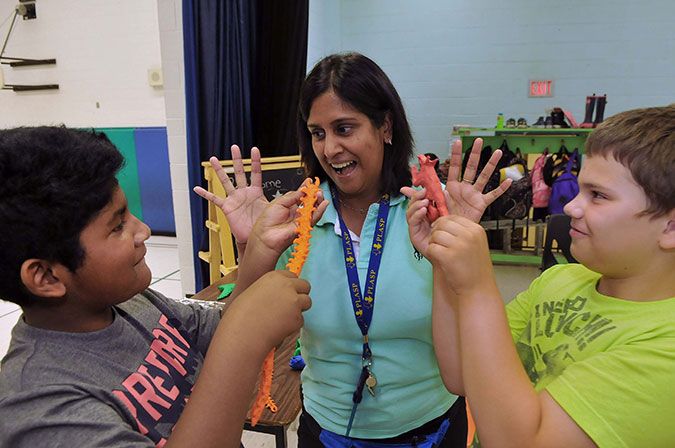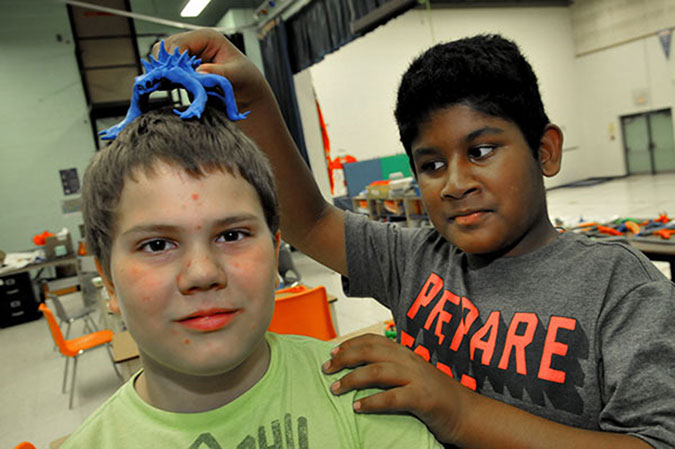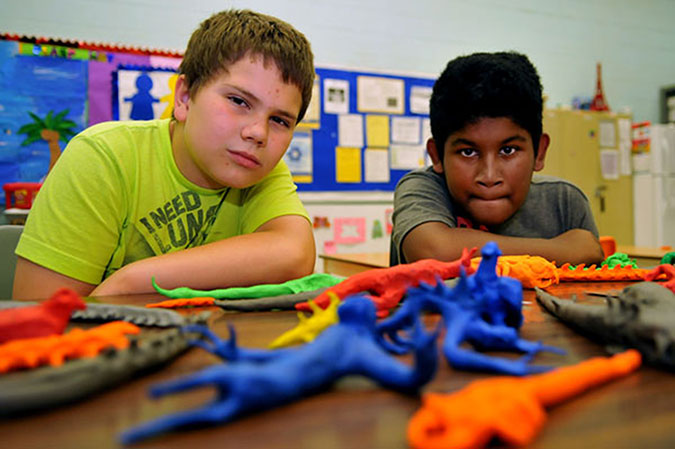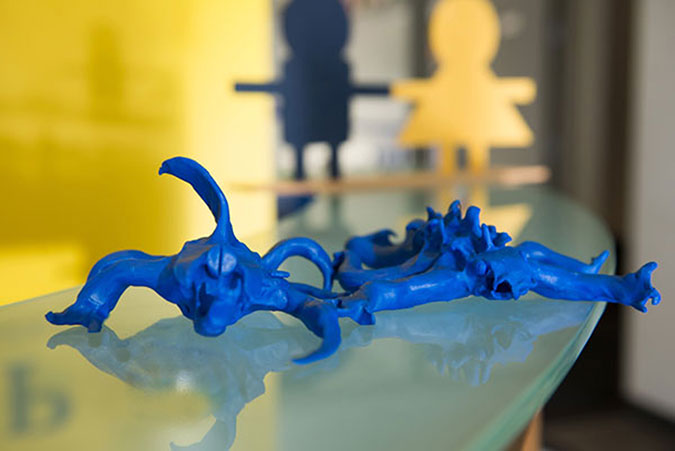|

Andrew and Yanis became friends unexpectedly. It all started in the PLASP program when their Program Director, Kissan, noticed Andrew making figurines with modeling clay. Kissan shared with PLASP the story of their growth and development, as well as the special friendship that resulted.
“One boy in my program was quite an introvert at the beginning of the school year; so I decided to find out what interests him. He was using modeling clay to create some very intricate carvings of animals,” Kissan says. “I gave him a separate workstation, and soon another boy joined him. I’d like to recognize their friendship as they grow and develop while exploring and researching together the habits of these creatures.”
Andrew and Yanis’ story touches on the four foundations that are important for children to grow and flourish, as outlined in “How Does Learning Happen?” Ontario’s pedagogy for the early years. These four foundations are Belonging, Well-Being, Expression and Engagement .
We visited Andrew and Yanis in their PLASP program to see their clay creations and learn more about the friendship that they have formed.
Andrew, a child in the PLASP program for five years, started working a lot with the modelling clay, Plasticine, at the encouragement of his Program Director. It didn’t take very long for Yanis to notice the creations that Andrew was making and become interested in what his peer was doing.
“When I first started working with Plasticine, I used a piece of cardboard to build my creations on and store them. But soon, I needed more space, so my Program Director set up an area that was dedicated to my Plasticine models. It was around that time that Yanis noticed what I was doing and started working with me on my creations.” (Foundation demonstrated: Belonging)
To listen to the boys while they work, you would think that they had been friends for a very long time, and it’s surprising to learn that they’ve only been friends for a short while. They are given a blue mound of Plasticine, and immediately they start brainstorming what kind of creature they will create. (Foundation demonstrated: Engagement)
“I’m thinking some kind of beast,” Andrew says to his friend. “What do you think, Yanis? And how many legs should it have?”
As they create, they make up stories about the creature they are making and asking each other questions like, “What part of the world do they live in?”
Within a couple of minutes, the boys have completed their model and are proud to display it. They call this “freestyling” - other times, they get together outside of PLASP at each other’s houses to watch science fiction movies and videos on You Tube and then replicate the creatures they see. (Foundation demonstrated: Expression)

When they are asked what other children think of their hobby, Andrew is quiet for a second before he replies, “Some of the kids don’t respect what we do, or they try and vandalize our creations…but then we think, we can make anything we want from this.” (Foundation demonstrated: Well-being)

“Some of the kids don’t respect what we do, or they try and vandalize our creations…but then we think, we can make anything we want from this.” - Andrew, age 10.
A day after meeting with Andrew and Yanis, we heard from Kissan, the Program Director, again. She said, “I sensed an air of excitement with the rest of the kids as you spoke to Andrew and Yanis, and they were all motivated to do something to show off their own skills, which I thought was really great!”
During Bullying Awareness and Prevention Week in Ontario, our school boards are sharing important messages around bullying – links to their individual sites are below.
Here’s a closer look at the four foundations found in the “How Does Learning Happen?” Ontario’s pedagogy for the early years:
Belonging refers to a sense of connectedness to others, an individual’s experiences of being valued, of forming relationships with others and making contributions as part of a group, a community, the natural world.
Well-being addresses the importance of physical and mental health and wellness. It incorporates capacities such as self-care, sense of self, and self-regulation skills.
Engagement suggests a state of being involved and focused. When children are able to explore the world around them with their natural curiosity and exuberance, they are fully engaged. Through this type of play and inquiry, they develop skills such as problem solving, creative thinking, and innovating, which are essential for learning and success in school and beyond.
Expression or communication (to be heard, as well as to listen) may take many different forms. Through their bodies, words, and use of materials, children develop capacities for increasingly complex communication. Opportunities to explore materials support creativity, problem solving, and mathematical behaviours. Language-rich environments support growing communication skills, which are foundational for literacy.

|